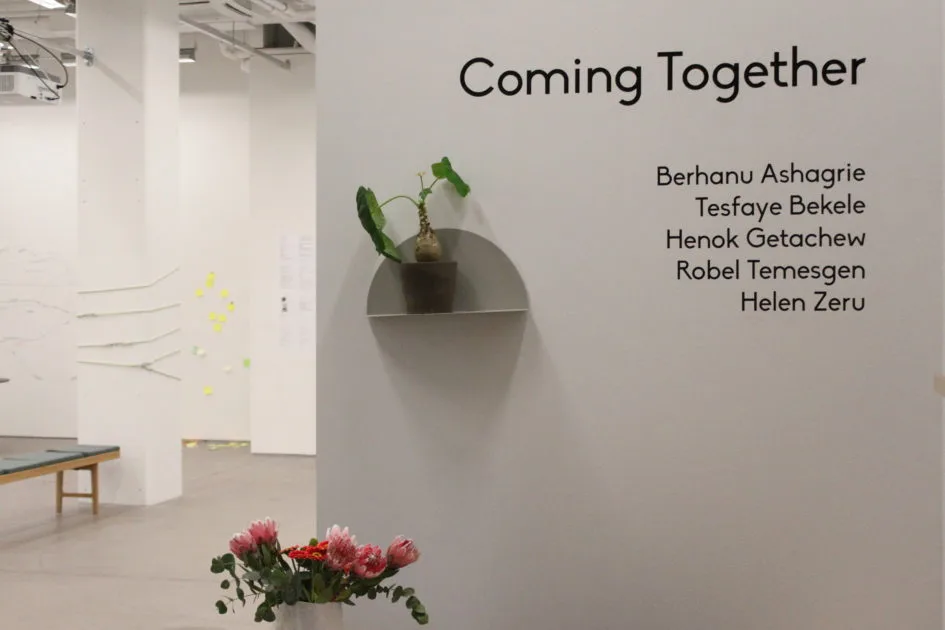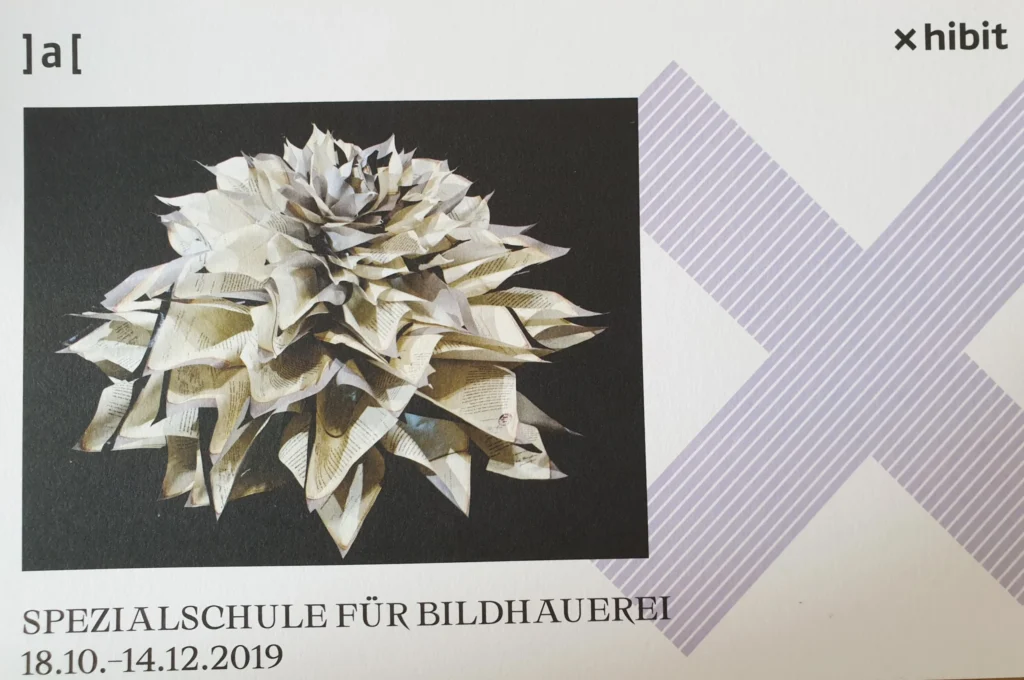Past
'Wulo' exhibition presents a body of works that are processes and outcomes of ongoing artistic research focused on the concept and practices of mourning, as a layered aesthetic, pedagogical, and political language.
In one way or another, each of us has been impacted by precarious socio-political conditions, both in the past and the present, that should make us potential candidates to imagine coming together based on vulnerability and loss. Despite differences, individuals and communities share a common thread that binds us through the shared experience of loss, allowing us to connect to a different sense of 'We'. The fundamental element here is the acknowledgment of the tenuousness of this 'We', that requires collective responsibility and responsiveness.
The exhibition includes diverse process-driven and multidisciplinary artworks, such as installation art, video, sound, interactive art with bodily experiences, woodcuts, and multimedia artworks. As an integral part of the exhibition, a workshop will be organized, fostering a communal space where individuals can come together to engage in collective dialogues and practices with mourning. This collaborative workshop aims to intertwine our diverse perspectives and emotions, weaving them into a collective journey toward a deeper understanding of our shared socio-political conditions.
The title of the exhibition and the workshop is ’Wulo,’ adapted from a mourning tradition that fosters a coming together to collectively address suppressed or postponed grief.

ONE BELT. MANY ROADS
2.6. – 1.7.2023
WUK
Vienna

Artists
Agung Kurniawan / Indonesia, Almagul Menlibayeva / Kazakhstan, Behzad Khosravi Noori / Iran, Pakistan, Berhanu Ashagrie Deribew / Ethiopia, Hatem Bourial / Tunesia, transparadiso (Paul Rajakovics, Barbara Holub) / Italy, Yara Mekawei / Egypt.
A project by Grammatik der Dringlichkeiten (Grammar of Urgencies) (Maren Richter, Klaus Schafler, mit Niels Plotard) / Austria.
In a collaborative experimental setting, One Belt. Many Roads investigates eight sites along China’s “New Silk Road” global infrastructure initiative, examining the effects of neo-colonialism on these places, what new types of dependencies or geographies this entails, and which long-standing mechanisms of dependency are being replicated. The “Belt and Road Initiative”, formerly “One Belt, One Road”, is arguably the most comprehensive global project to accelerate the transport of goods between Asia and Europe (including Austria), by which China aims to declare itself the world’s leading economic power. Various transportation corridors will be built for this purpose to achieve the necessary logistics, both on land (with a gigantic high-speed rail network) and on water.
In the VERSUCHSANSTALT of today’s WUK, originally built as a locomotive and machine factory, eleven collaborators from nine countries, who have been working together since 2021, explore how toxic entanglements and their narratives have local and geopolitical impacts.
The taste of water
Leaky vessels, flowing rituals, and non-consensual collaborations
9.11.2022–5.3.2023
Exhibit Gallery
Vienna

Water. Water has memory. It registers what happens to it. It seems simple and pure but it hides its dissolved memories in plain sight – histories of labor, pollution and colonialism. Its flow conjures connnections of discontinuous times of experience. Water is centrifugal and fugitive, it is in/around/within/without/below/along. Water leaks through territories. Moving through pores, bodies, communities and nations – water loves and conflicts. Water is an element of care in a time when land is the element of fear. Water is also a weapon, a conflict line, a surface that reflects geopolitics and shapes economies and climates. It is both a resource and a proxy, a venue for constant „friction“ at the crossing of empires. The Taste of Water is a site for multiple encounters with and around water. The exhibition is a leaky vessel, with artworks flowing in and out of the space. Propositions are realized elsewhere only to wash up on the Academy’s shores. As an exhibition, performance space, screening room, and ritual space, The Taste of Water takes cues from water’s characteristics – flowing, shape-shifting, non-linear – appearing as a medium and signifier, in the shape of sensorial sculpture, sound installation, video work and text interventions. Like the gravitational phenomena of rising and falling of tides, at times, the currents meet or diverge, forming a venue for non-consensual collaboration, swimming in mud, a place of sharing rituals, and olfactory
witchcraft.
An exhibition by the PhD in Practice program of the Academy with works by: Mohamed Abdelkarim, Andrea Ancira, Angela Anderson, Anca Benera and Arnold Estefan, Berhanu Ashagrie Deribew, Soñ Gweha, Masimba Hwati, Hyo Lee, Rabbya Naseer, Vrishali Purandare, Francis Whorrall-Campbell
Shared Spaces in Change
19.11.2021 - 30.01.2022
Kornhausforum
Bern
Ein Ausstellungsprojekt und partizipative Aktionsräu- me zum neuen Verständnis von Öffentlichkeit und Urbanität, organisiert durch das Kornhausforum Bern in Zusammenarbeit mit dem Architekturforum Bern und der Kommission Kunst im öffentlichen Raum Bern.
Gemeinschaftlich genutzter Raum und damit unser Verständnis von Öffentlichkeit unterliegen einem steten Wandel. In den letzten eineinhalb Jahren haben die Folgen der Corona-Pandemie unsere Formen des Zusammenlebens grundlegend verändert. Wie wollen und werden wir zukünftig zusammenleben? Wie ver- ändern und stärken wir die Wahrnehmung, Aneigen- barkeit und Resilienz unserer öffentlichen Räume?
Grundlegende Haltung der Ausstellungskon- zeption ist es, die Sinne zu öffnen und wahrzunehmen was gerade passiert. Wir schauen direkt auf unsere Jetztzeit, wir richten uns zur Suche aus, stellen Fragen und versammeln Artefakte und Positionen und vernet- zen Akteure. Aus diesem Grund sind die Ausstellung und seine angegliederten, partizipativen Aktionsräu- me experimentell und co-kreativ angesetzt. Ihre Ge- stalt formt sich durch die ausgewählten Beiträge und reflektiert damit das eigene Design und den Prozess der Ausstellung.
Die Ausstellung zeigt 35 ausgewählte Projekte unterschiedlicher Disziplinen und Herkünfte, davon 11 Positionen im öffentlichen Stadtraum in Bern.


Coming Together
7.2 -1.3.2020
Kunsthall Oslo
Oslo

Five artists from Addis Ababa, who also work with teaching, organization, text and performance, will live and work in Oslo for three weeks. The change of government in Ethiopia in 2018 has, for the first time in many decades, provided a political climate in which it is possible to imagine the establishment of autonomous institutions. For Coming Together, the exhibition space at Kunsthall Oslo will function as a workshop, think tank and space for discussion that facilitates addressing the question of how independent artists can organise themselves? An exhibition that unfolds over time will be accompanied by scrutiny, discussions and the preparation of a program for a new artists' organization to be constituted in 2020. In addition, three open events will be held, one each week during the exhibition period. The events bring together representatives from Addis and Oslo to explore the similarities and differences between these places and establish what we can share and learn from each other.
Coming Together is supported by the Fritt Ord Foundation and Arts Council Norway.
Berhanu Ashagrie, Tesfaye Bekele, Henok Getachew, Robel Temesgen, Helen Zeru
Special School
18.11 - 14.12.2019
Xhibit
Vienna

The lettering Special School for Sculptors can still be found today on the building in Kurzbauergasse. "Special" is the name formally given to the School of Sculpture in the period from 1864 to 1921, to distinguish it from a General School of Sculpture, which was intended to prepare students for the special one. The exhibition Special School of Sculpture brings together artistic positions that in various ways connect to the sculpture studio of the Academy of Fine Arts Vienna, which was built in 1912/13 in the Cottage Quarter of the Prater. From the beginning, the research on the history of the building as well as on artistic works related to the house was strongly tied to personal conversations and interview situations and has developed in different directions through the members of the working group. Without claiming completeness and chronology in the treatise, the exhibition shows artistic contributions that address both the history of different sculptural practices as well as personal strategies and approaches in dealing with the time of study.
Dispossession, Willful Weeds, and World-Making from the Ruins
03.04.2019
Mumok – Museum moderner Kunst Wien
Vienna



